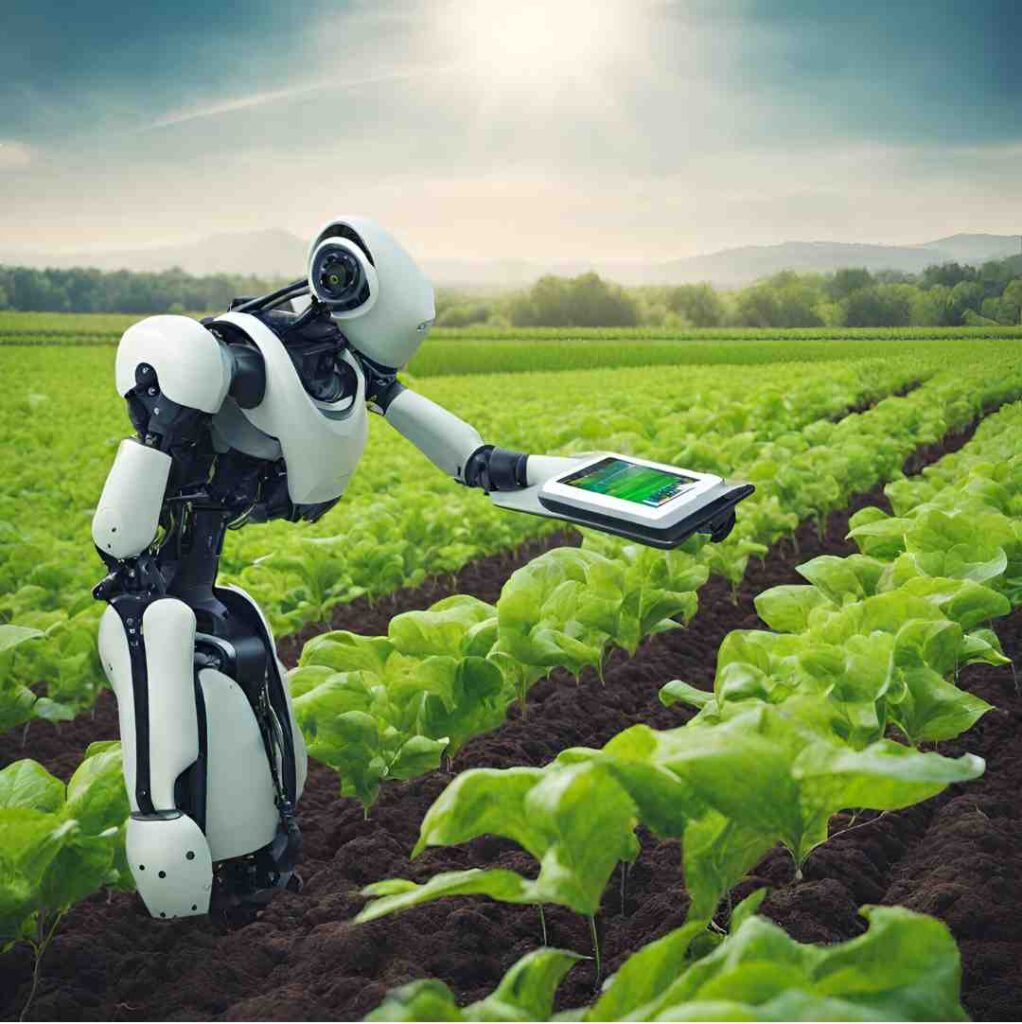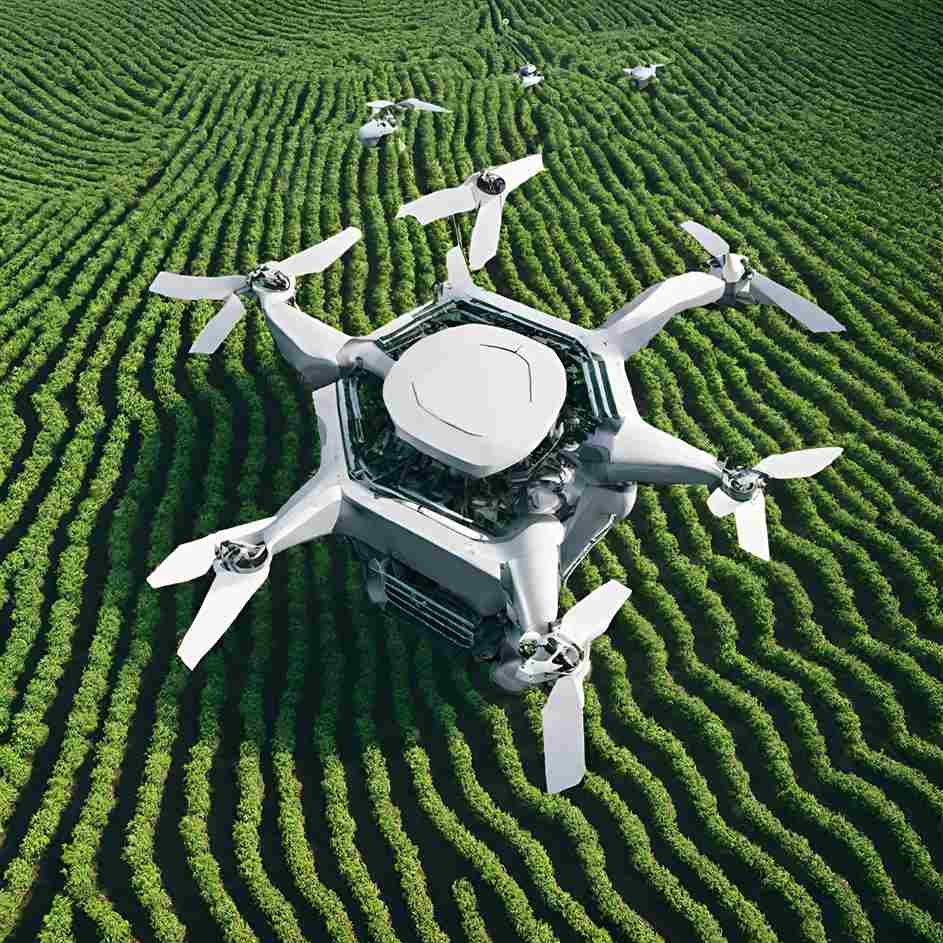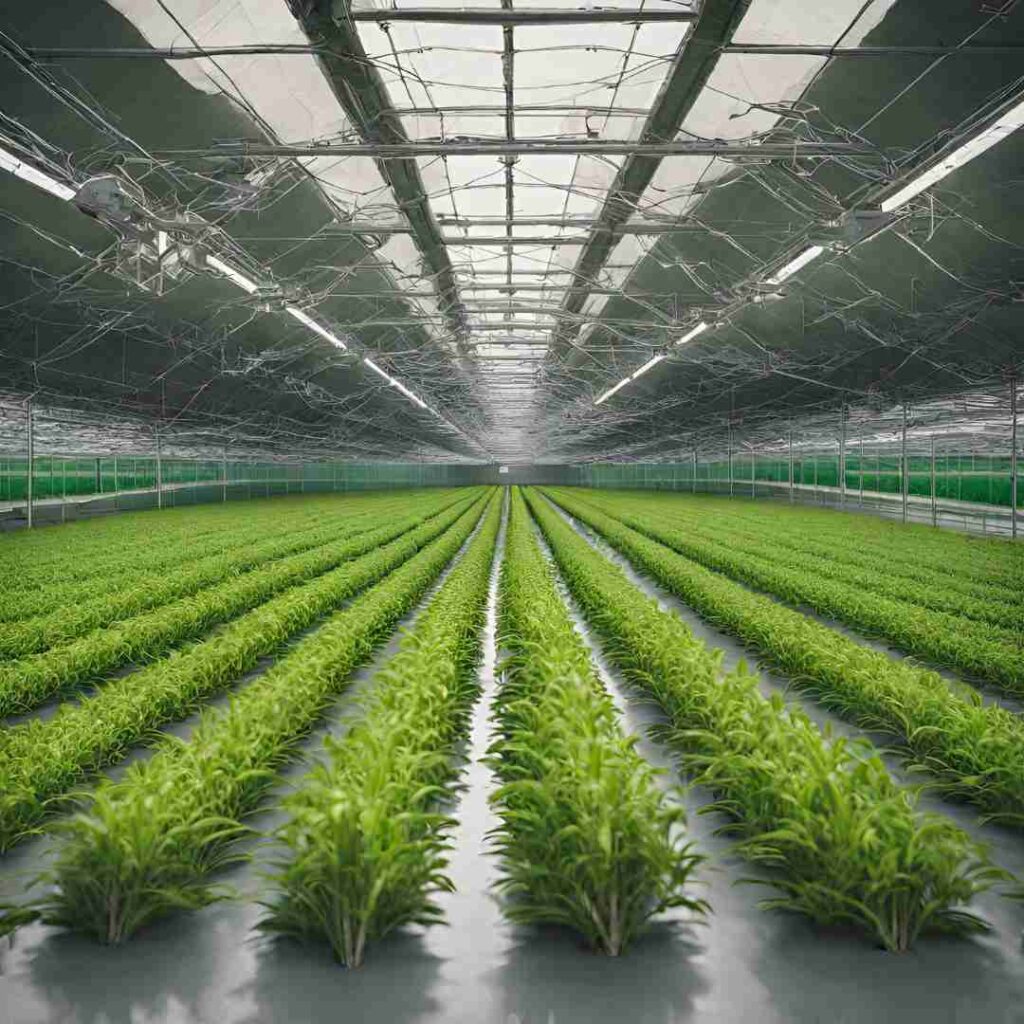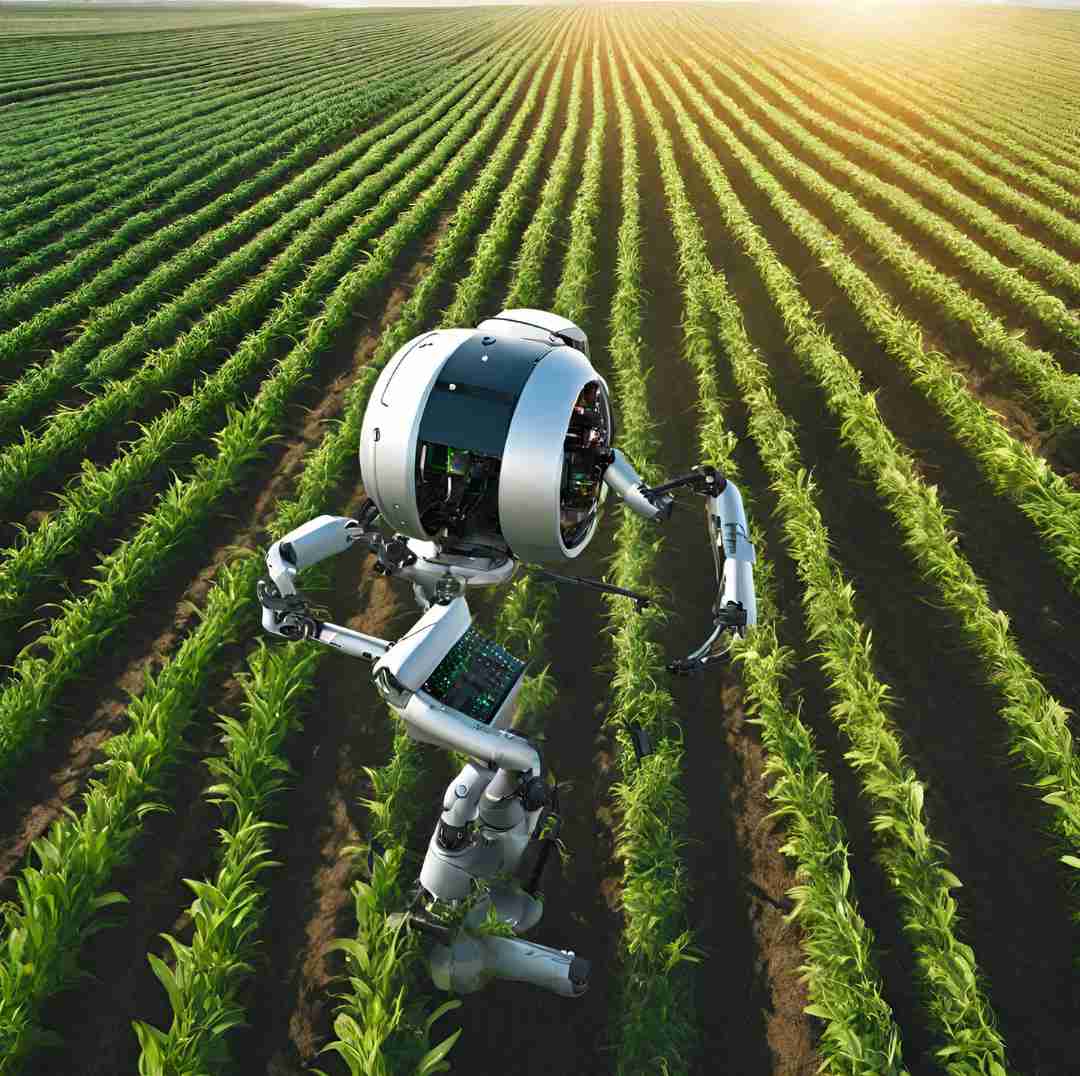Transforming Agriculture: The Power of Artificial Intelligence
Introduction
Welcome to the world of agriculture revolutionized by Artificial Intelligence (AI). In this comprehensive guide, we will explore how AI is reshaping farming practices, improving efficiency, and ensuring sustainable food production. Join us on a journey through the fields of data-driven decision-making, automation, and the limitless possibilities of AI in agriculture.
Table of Contents
Understanding AI in Agriculture
Artificial Intelligence, often abbreviated as AI, refers to the ability of machines, particularly computers, to mimic human intelligence and perform tasks that typically require human intelligence, such as learning, reasoning, problem-solving, and decision-making. In agriculture, AI brings a technological leap, allowing farmers to harness data and automation for unprecedented results.
AI is not about replacing humans; it’s about augmenting human capabilities and enabling data-driven decisions. By analyzing vast amounts of data, AI systems can provide insights that were previously unimaginable in agriculture.
Benefits of AI in Agriculture
The benefits of AI in agriculture are manifold, bringing a host of advantages to farmers and the industry as a whole:
Data-Based Decisions
One of the fundamental strengths of AI in agriculture is its ability to make data-based decisions. AI systems can process data from various sources, including sensors, satellites, and drones, to provide farmers with actionable insights. For example, AI can analyze soil and weather data to recommend optimal planting times and crop varieties.
Cost Savings
AI-driven automation significantly reduces labor costs and resource wastage. For instance, automated harvesting machines equipped with AI can efficiently pick ripe fruits, reducing the need for manual labor. This not only saves money but also increases productivity.
Automation Impact
Automation is at the heart of AI’s impact on agriculture. AI-powered machinery and equipment can perform tasks with precision and consistency, from planting and irrigation to pest control and harvesting. This automation ensures that farming processes are executed efficiently and with minimal human intervention.
The Role of AI in Agriculture Information Management Cycle
To understand the full scope of AI in agriculture, it’s essential to recognize its role in the agricultural information management cycle:
- Data Collection: AI systems gather data from various sources, including sensors, satellites, and IoT devices.
- Data Analysis: AI analyzes the collected data to derive valuable insights and patterns.
- Decision Support: AI provides farmers with actionable recommendations based on data analysis.
- Automation: AI-driven machines and equipment execute tasks according to the decisions made.
- Feedback Loop: Data from automation is fed back into the system for continuous improvement. 2: Applications of Artificial Intelligence in Agriculture
Artificial Intelligence is a versatile tool in agriculture, offering a wide range of applications that transform the way farming is done. Let’s delve into these applications, each with its own unique impact on the agricultural landscape:
Precision Agriculture
Precision Agriculture, often referred to as smart farming, is a prime example of how AI is revolutionizing the industry. It involves the use of AI-driven technologies to optimize farming practices. Here’s how AI contributes to precision agriculture:
- Crop Monitoring: AI-powered drones equipped with sensors can monitor crop health by analyzing spectral data. This allows farmers to detect early signs of disease or stress in plants, enabling timely intervention.
- Soil Analysis: AI can analyze soil data to determine its composition and nutrient levels. Farmers receive recommendations on the precise amount and type of fertilizer needed for optimal crop growth, minimizing waste.
- Yield Prediction: Through historical data analysis and real-time monitoring, AI systems can predict crop yields with remarkable accuracy. This information aids in better resource allocation and marketing strategies.
Automation in Agriculture
Automation in agriculture has been a game-changer, significantly reducing manual labor and improving efficiency. Here are some key areas where AI-driven automation has made a significant impact:
- Automated Irrigation Systems: AI-powered irrigation systems analyze weather forecasts, soil moisture levels, and crop requirements to determine when and how much to irrigate. This minimizes water wastage and ensures optimal conditions for crop growth.
- Detecting Leaks or Damage: AI can detect leaks or damage in irrigation systems in real-time, preventing water loss and reducing repair costs. Sensors equipped with AI algorithms can identify irregularities and trigger alerts.
- Intelligent Pesticide Application: AI systems can precisely target areas where pesticides are needed, reducing chemical usage and minimizing environmental impact. This not only saves money but also promotes sustainable farming practices.
Crop and Soil Monitoring

AI’s ability to continuously monitor crops and soil conditions has transformed farming. Here’s how it works:
- Disease and Pest Detection: AI-powered image recognition and sensors can identify signs of disease or pest infestations in crops. Early detection allows farmers to take immediate action, reducing crop loss.
- Livestock Health Monitoring: AI-driven sensors can monitor the health and behavior of livestock. Any anomalies or signs of illness can trigger alerts, ensuring prompt veterinary care.
- Yield Mapping and Predictive Analytics: AI analyzes data from multiple sources, including satellite imagery, to create yield maps. These maps help farmers make informed decisions about crop management and harvesting.
Automatic Weeding and Harvesting
Automating labor-intensive tasks like weeding and harvesting has been a significant breakthrough in agriculture:
- Automatic Weeding: AI-driven robots equipped with cameras and machine learning algorithms can identify and remove weeds in crop fields. This reduces the need for herbicides and manual labor.
- Sorting Harvested Produce: AI-powered sorting machines can grade and sort harvested produce based on quality, size, and other parameters. This ensures that only high-quality produce reaches the market.
Surveillance

AI’s surveillance capabilities are valuable for monitoring large agricultural areas:
- Security: AI-powered surveillance systems can protect farms from theft and vandalism. Smart cameras with facial recognition and motion detection can alert farmers to potential intruders.
- Wildlife Management: AI can help manage wildlife interactions in agriculture. Drones equipped with AI can monitor animal movements and deter wildlife from entering crop areas.
Incorporating AI into these diverse aspects of agriculture enhances productivity, minimises resource wastage, and contributes to sustainable farming practices.
3: Challenges of AI in Agriculture
While the potential benefits of AI in agriculture are substantial, there are several challenges that farmers and the industry must navigate when adopting these technologies. It’s essential to address these challenges to ensure successful integration and maximize the advantages of AI:
Large Upfront Costs
Implementing AI in agriculture often requires significant initial investments. The cost of purchasing AI-driven equipment, sensors, and software can be a barrier, especially for small-scale farmers. However, it’s crucial to view these costs as long-term investments that can lead to substantial savings and increased yields over time.
Reluctance to Embrace New Technologies and Processes
Farmers may be hesitant to adopt AI technologies due to a reluctance to change traditional farming practices. Convincing them of the benefits and providing training and support during the transition is essential. Demonstrating real-world success stories can be persuasive in overcoming this reluctance.
Lack of Practical Experience with New Technologies
Farmers may lack practical experience with AI and may feel overwhelmed by the complexity of these systems. Educational programs and partnerships with tech experts can bridge this knowledge gap and empower farmers to make the most of AI tools.
A Lengthy Technology Adoption Process
The process of adopting AI in agriculture can be time-consuming. It involves data collection, system integration, and training. This transition period can disrupt regular farming operations. Therefore, careful planning and gradual implementation can mitigate these challenges.
Technological Limitations
AI technologies, while powerful, have their limitations. For example, machine learning models may require vast amounts of data to achieve high accuracy. Additionally, AI systems can sometimes produce false positives or negatives, affecting decision-making. Continuous advancements in AI research aim to address these limitations and improve AI’s reliability in agriculture.
Privacy and Security Issues
Collecting and managing sensitive agricultural data raise privacy and security concerns. Farmers must ensure that their data is protected from unauthorised access or cyberattacks. Implementing robust security measures and adhering to data protection regulations is crucial.
It’s important to recognise these challenges and actively work to overcome them to fully unlock the potential of AI in agriculture. The benefits, as we’ve discussed, are substantial and can drive the industry toward a more sustainable and productive future.
4: The Future of AI in Agriculture
The future of agriculture is closely intertwined with the continued advancement of AI technologies. Let’s peer into the crystal ball and see how AI is poised to shape the farming landscape in the years to come:
Transforming Farming with AI

The integration of AI is transforming farming from a labor-intensive industry into a data-driven, precision-based science. Here are some key ways AI is poised to reshape farming practices:
- Predictive Analytics: AI’s ability to analyze historical and real-time data will become even more sophisticated. Farmers will rely on AI-generated predictions for everything from planting and irrigation to pest control and harvesting.
- Sustainability: AI’s contribution to sustainable farming practices will become more pronounced. Efficient resource allocation, reduced chemical usage, and optimised water management will be integral to AI-driven farming.
- Crop Varieties: AI will help breeders develop crop varieties that are more resilient to changing climate conditions. Genetic data analysis and AI-driven breeding programs will expedite the development of new strains.
Impact on Agricultural Workers
As AI becomes more integrated into agriculture, the roles of agricultural workers will evolve:
- Upskilling: Farm workers will need to acquire digital literacy and AI-related skills to operate and maintain AI-driven equipment and systems. Educational programs and training opportunities will be crucial.
- Monitoring and Maintenance: While AI can handle many tasks, human oversight will remain essential for monitoring AI systems, addressing technical issues, and ensuring the integrity of data.
- Data Analysis: Data analysts and agronomists will play a vital role in interpreting AI-generated insights and making informed decisions.
Integration with Other Technologies
AI will not work in isolation but will integrate seamlessly with other emerging technologies:
- IoT (Internet of Things): IoT devices, such as soil sensors and weather stations, will collect real-time data that AI systems can analyze. This synergy will lead to more accurate recommendations and predictions.
- Robotics: AI will work hand-in-hand with agricultural robots for tasks like planting, weeding, and harvesting. These robots will be equipped with advanced AI vision systems for precise operations.
- Blockchain: Blockchain technology can enhance the traceability of agricultural products. AI can assist in tracking and verifying the data recorded on the blockchain, ensuring transparency in the supply chain.
- Biotechnology: AI-driven genetic analysis will accelerate biotechnological advancements in crop breeding and disease resistance.
Role of Software Development Teams in AI Adoption
The success of AI in agriculture heavily relies on collaboration between farmers and software development teams:
- Custom Solutions: Software developers will create customized AI applications tailored to the specific needs of farmers, crops, and regions.
- Maintenance and Updates: Continuous support and updates from software development teams will ensure that AI systems remain up-to-date and functional.
- Data Management: Developers will assist in setting up secure data storage and management systems to protect sensitive agricultural data.
The synergy between agricultural expertise and software development will be pivotal in maximizing the benefits of AI in agriculture.
Section 5: Conclusion
In conclusion, Artificial Intelligence in Agriculture is more than a technological advancement; it’s a revolution that promises to feed the world sustainably, efficiently, and intelligently. We’ve explored the myriad applications of AI, from precision agriculture and automation to surveillance and data-driven decision-making.
While challenges exist, such as upfront costs and privacy concerns, the benefits of AI adoption far outweigh these obstacles. AI is on the cusp of reshaping farming practices, ensuring food security, and minimizing environmental impact.
As we look ahead, AI’s integration with other emerging technologies, its impact on the workforce, and the collaboration between software developers and farmers will play pivotal roles in defining the future of agriculture.
In this dynamic landscape, embracing AI is not an option; it’s a necessity for the modern farmer. As AI continues to evolve, it will be the cornerstone of a sustainable and prosperous future for agriculture.
Thank you for joining us on this journey through the transformative power of Artificial Intelligence in Agriculture. If you have any questions or would like to explore specific topics in more detail, please don’t hesitate to reach out. Together, we’re cultivating a smarter, more sustainable future for agriculture.

1 thought on “Artificial Intelligence In Agriculture: Discover How!”